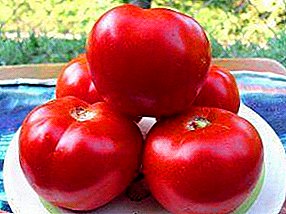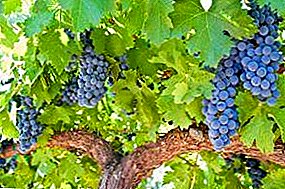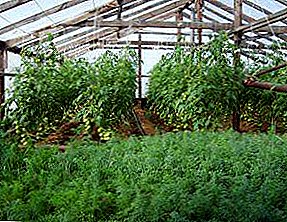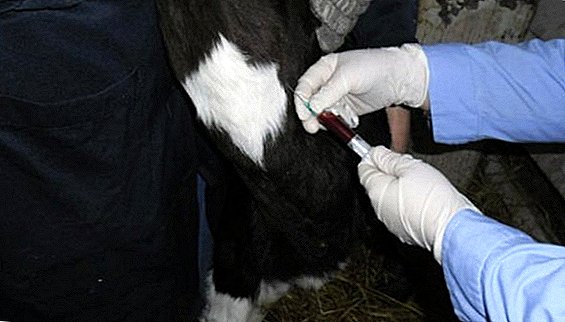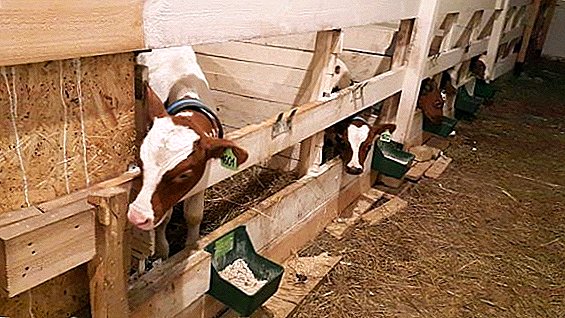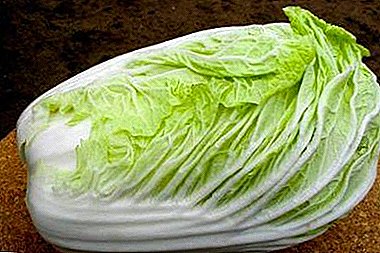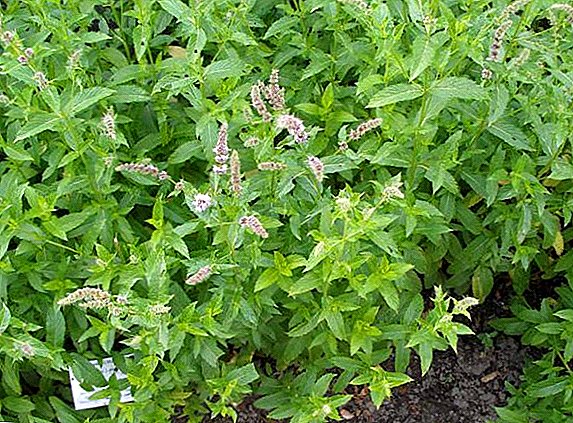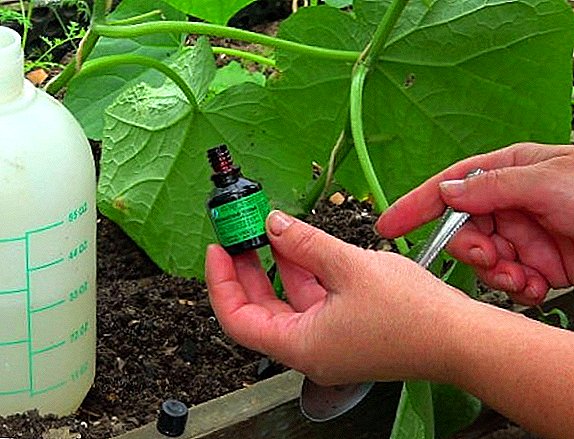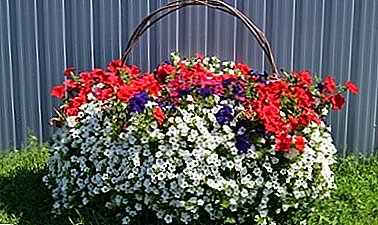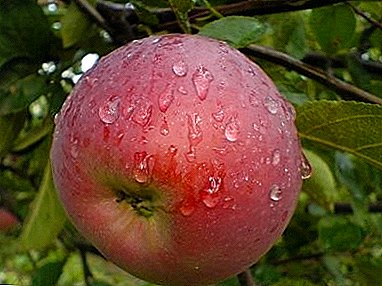
Probably, the creators of this sort of apples, seeing the beauty of light green, with a blurred fruit blush manifestation of the living forces of the nature of the tree, named it in honor of the second-order Greek deity.
Based on this, it would be more correct to give him the name "Dryad" - in honor of the nymph of forests and trees, but in 2002 he entered the State Register under the name "Nymph".
Breeding history
The emergence of a new variety, like the birth of mythical heroes, was accompanied by a difficult story. Created it in Zonal Research Institute of Horticulture of the North Caucasus, using artificial mutation and cloning of known varieties - Rennet Simirenko 17-36 and Kuban spur.
In the course of mutational breeding, plants were affected by artificial mutagenic factors (ultraviolet, chemicals, distant pollen), and then the most productive specimens were selected. This approach has accelerated the process of selecting preferred qualities:
- from the variety Renet Simirenko 17-36 - early entry into the reproductive phase, mixed fruiting, the size of the fruits, their good "capacity", drought tolerance;
- from the Kuban variety spur - high yield, crown compactness, fruit vitality, presentation, better survival rate in the regions of the North Caucasus and southern Russia.

The created variety managed to instill in what his parents were vulnerable - invulnerability to powdery mildew and scab. And yet, the law of gardening has worked: "children" in comparison with "parents" always give early yields.
The variety Nymph was extremely productive for the southern regions and, especially, for short-cycle gardens.
A short cycle garden is also available to gardeners.
The idea of a short cycle garden was developed for industrial planting of fruit trees in order to intensify agrotechnical processes. They are well proven in the southern regions of the country and were recommended for farms and private gardening. The main condition is the leveled surface throughout the garden.
The meaning of this method of growing fruits is the creation of a thickened planting - the "fruit wall" for 10-12 years. During this time, varieties that begin fruiting for 1-2 years, completely exhaust their productivity.
The crowns of trees growing, intertwining, reducing the access of light to the internal branches, they cease to bear fruit. The garden is closed. Root out. They leave it under steam, or plant garden crops on this site, and in 2-3 years they plant new seedlings.
Reference: Fruit wall should not be wider than 1.5 meters and exceed a height of 2 meters. In this case, gardening can be mechanized.
The variety Nymph, like no other, is most promising for gardens of this type.
Description of the variety Nymph
- Nymph refers to the late winter dessert varieties. The area of southern Russia and the Caucasus does not require high winter hardiness and early maturation. The variety adapts well to the steppe and forest-steppe zones, in direct proportion to the quality of the soil.
- Fruiting grade starts early. From the 3rd year of life, he is already ready to give 100 centners per hectare, and in the reproductive peak - more than 400 centners per hectare.
- The variety has a rather common quality among apple trees - self-infertility. Its productivity reaches the highest productivity only if the following fruit trees of the variety are planted: Prikubanskoe, Aydored, Peach, Kuban Spur, Zarnitsa or Korey. Such interaction with pollinators should be based on:
- common terms of flowering and fruiting:
- specific characteristics of the region;
- coincidence of developmental phases of trees and life expectancy.
- Harvesting apples Nymph occurs at the beginning of October (before the Feast of the Intercession). Valuable quality is a long-term "bulge" (until the end of spring), because consumer maturity comes later. There is no loss of part of the crop during storage. Apples tolerate transportation.
- Apples Nymph have an excellent presentation, which corresponds to 95% of the total volume of the removed fruits.
- Achievement of selection work is the immunity of the variety to fungal diseases.
Important: New varieties do not preserve acquired characteristics, therefore they cannot multiply by seeds. For these purposes, cloning is used - vegetative reproduction through grafting, grafting, rooting cuttings.
- Large and beautiful apples Nymph - a storehouse of fresh vitamins. They are shown for use by people suffering from metabolic disorders. In processed form, they come to the consumer in the form of juices, jams, baby food, fruit wine, jelly and marmalade.

To Nastya, Winter Beauty, In memory of a warrior, Orlik and Aromatny also belong to winter varieties.
A photo
More clearly see the variety of apples Nymphs can be in the photo below:





Features
 Breeding tasks averaged the morphological features of the "parents", creating a tree rather short than medium. Crohn rounded, with raised branches. The surface roots in a span exceed the width of the crown, this allows you to determine the optimal distance between the trunks during planting.
Breeding tasks averaged the morphological features of the "parents", creating a tree rather short than medium. Crohn rounded, with raised branches. The surface roots in a span exceed the width of the crown, this allows you to determine the optimal distance between the trunks during planting.
The bark has an ocher-gray color, smooth. The branches of the third order are brown. Shoots are straight and thick. Last year - are ready for fruiting.
By the middle of spring white buds appear from oval-shaped large buds of small pubescence. During flowering, they turn into large cupped flowers with cream-colored petals.
Wide ocher-green leaves have a jagged edge and a wrinkled surface. The leaf, as a rule, is directed upwards, has no pubescence, keeps on a short scape.
The main attraction of the apple tree - the fruit. Apples have a solid size (weight up to 300g). The thick light green skin on the sunny side is touched by a diffuse purple blush. Under the skin, large whitish spots appear, like in the parent variety Simirenko.
The Moscow Winter, Orlovim, Orlovsky pioneer, Orlovsky striped and Orlinka varieties can also boast with large fruits.
A strong wax coating on a dense surface characterizes a winter variety. Consumer quality of apple improves juicy aromatic pulp, the taste is richly sour-sweet. Over time, in the vaults the aroma and brightness of the taste increases.
Advantages and disadvantages
 The obvious advantages of the variety include:
The obvious advantages of the variety include:
- environmental adaptability;
- early readiness for fruiting;
- immunity to disease, both during growth and during storage;
- exceptional taste;
- select trade dress;
- long shelf life;
- portability of transportation;
- dietary value.
There is only one drawback, but we also eliminate it: inability to self-pollination.
Important: Take care of the pollinator within a radius of 2 km (zone of flight of the bee for a bribe).
Similar qualities have the following varieties: Nastya, Narodnoe, Medunitsa, Starkrimson and March.
Landing
There are no particular planting requirements for the described variety. As for other apple trees, spring and autumn dates for these works are permissible. Unless, a pit under a sapling can be prepared from the autumn, filling it with organic fertilizers.
The success of rooting depends largely on the composition of the soil: the advantage of well-drained loams. Soil acidity is reduced by the addition of lime. The negative impact of groundwater will help to avoid planting apple trees on artificial mounds, fortified, stakes driven into the ground. So do and loamy solid ground.
Planting a young tree is better away from old trees, and certainly not instead of raskorchevki. Any apple tree loves the sun and protection from a strong wind, so it will be comfortable for her on a sunny hillock outside the wall of the house.
If you wish, you can get several trees from one seedling. For this I use the method of reproduction by layering. The prepared annuals are planted in the fall under an inclination, and in the spring it is bent down and pinned to the ground, sprinkling shoots. The whole season is carefully looked after the cuttings so that it takes root, and next spring it can already be separated and transferred to another place.
Tip: Actively replenish your garden with new varieties of apple trees, taking into account regional peculiarities. It is not by chance that a large army of specialists is working on their breeding. With new varieties, the joy of high yields and relief from reduced care concerns will come to your garden.
Care
 Standard care for an apple tree consists of regular, throughout the growing season, activities:
Standard care for an apple tree consists of regular, throughout the growing season, activities:
- watering;
- trimming;
- fertilizer;
- disease prevention;
- preparation for the cold season.
Abundant watering - at least 5 times per season. Each time, up to 5 buckets of water are poured under the barrel. For optimum absorption, watering is preceded by loosening to a depth of 20cm. Humidification can be made with a garden hose into a groove prepared by a pristvolny circle, or with a sprinkler. In this case, the leaves and fruits are cleaned from dust and insects.
Proper pruning is a sure way to achieve high yields. Her goal:
- reduce the height of the tree, for the convenience of caring for and harvesting;
- increase the availability of sunlight to fertile longlines;
- provide protection against diseases and pests;
- improve the quality of fruits and their presentation.
Important: Pruning is done before sap flow in the tree. Its sign is swelling of the kidneys.
Beside pruning, pinching and pinching are applied. Manually removing green shoots that thicken the crown is called pasynkovaniem. It essentially precedes the pruning effort that will have to be done when these shoots become stiff.
Pinning is also a simple operation that can be performed simply with a fingernail: the tip of the shoot is removed at an early stage. Late? We'll have to use a pruner.
 Basal top dressing of the Nymph variety is carried out with mineral and organic fertilizers in accordance with the general recommendations. For making their liquid or granular forms there is a developed scheme and recipe in proportions. It must be followed in accordance with the seasonal phases of plant life.
Basal top dressing of the Nymph variety is carried out with mineral and organic fertilizers in accordance with the general recommendations. For making their liquid or granular forms there is a developed scheme and recipe in proportions. It must be followed in accordance with the seasonal phases of plant life.
The variety Nymph during breeding is already sufficiently protected from diseases. A useful initiative would be an autumn whitewashing of the stem with a solution of lime or garden paint. It will protect the tree from sunburn in February-March and prevent cracking of the bark, which increases the possibility of penetration of fungal spores and pests under it.
However, information about common pests of apple orchards, such as fruit sap, mining apple moth, moth, hawthorn and silkworms, may be useful to you.
The joyful season of harvesting for the variety Nymph will be timed to coincide with the great feast of the Intercession. In dry clear weather, the collected apples can be decomposed into boxes and cleaned in the cool.
The term of their consumer maturity will not come soon. By that time, they will already be stored in basements with a constant temperature close to 0 ° C. And until May, those who raised and cherished them will go down for fresh fruits.


